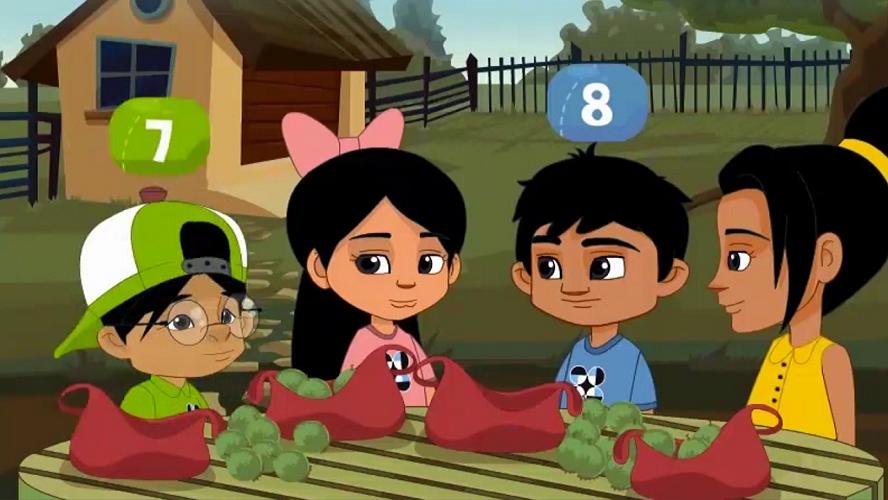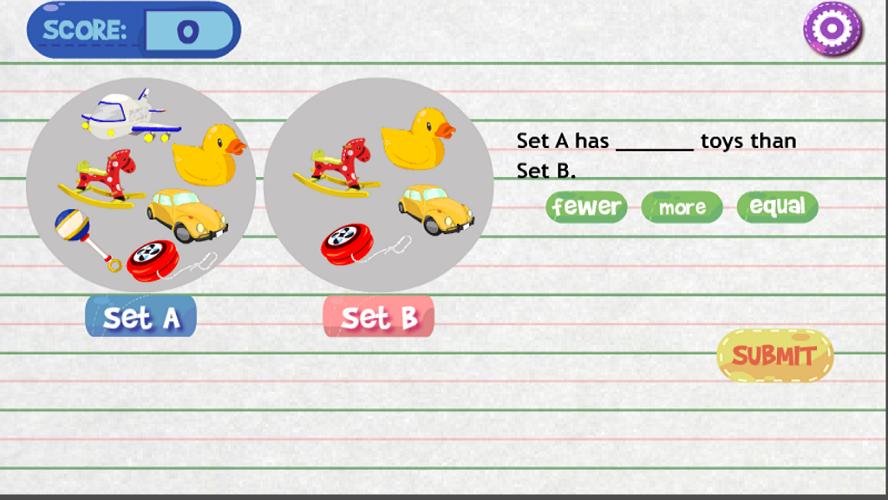Gr - How Many More or Fewer Do I Have
The DOST Courseware is a locally-produced, all-original Filipino highly interactive multimedia educational application packages available both in Windows and Android versions, conceptualized, digitized and produced as spearheaded by the Science Education Institute (SEI-DOST) in partnership with the Advanced Science and Technology Institute (ASTI-DOST) and in cooperation with the Department of Education (DepEd), Philippine Normal University (PNU) and University of the Philippines-National Institute for Science and Mathematics Education (UP-NISMED), which aims to develop information and communication technology learning innovation to support the upgrading and improvement of science and mathematics education in the country. The DOST Courseware are provided for free to schools and are also made available online as supplemental resources for teachers and student as a fun and interactive approach to e-learning and blended learning.
Grade 1 – 6 Mathematics (2nd Edition) The K-12 aligned Grades 1-6 Mathematics DOST Courseware is composed of 60 lessons in mathematics. Modules are divided into three parts: Activities, Fixing Skills and Evaluation and features student-characters Aida, Dan, Ed and Tessa.
How Many More or Fewer Do I Have?Objective:
Determine the difference in quantity between two sets of objects based on their relative positions.
Materials:
* Two sets of objects (e.g., counters, blocks, marbles)
Setup:
1. Arrange the first set of objects in a straight line or row.
2. Arrange the second set of objects in a parallel line or row, directly below or above the first set.
Gameplay:
1. Compare the positions of the objects in the two rows.
2. Identify the object in the second row that is directly below or above the last object in the first row.
3. Count the remaining objects in the second row.
4. Determine if the second set has more or fewer objects than the first set.
Example:
First set: 5 counters (arranged in a straight line)
Second set: 7 counters (arranged in a parallel line directly below the first set)
* The object in the second row directly below the last object in the first row is the 5th counter.
* There are 2 counters remaining in the second row.
* Therefore, the second set has 2 more counters than the first set.
Variations:
* More or Fewer? Variation: Determine whether the second set has more or fewer objects than the first set, without counting the difference.
* Difference Variation: Calculate the exact difference in quantity between the two sets.
* Mixed Set Variation: Use different types of objects in the two sets (e.g., counters and blocks).
Educational Benefits:
* Number recognition and counting
* Comparison and ordering
* Addition and subtraction concepts
* Spatial reasoning and visual perception
* Problem-solving and logical thinking
Gr - How Many More or Fewer Do I Have
The DOST Courseware is a locally-produced, all-original Filipino highly interactive multimedia educational application packages available both in Windows and Android versions, conceptualized, digitized and produced as spearheaded by the Science Education Institute (SEI-DOST) in partnership with the Advanced Science and Technology Institute (ASTI-DOST) and in cooperation with the Department of Education (DepEd), Philippine Normal University (PNU) and University of the Philippines-National Institute for Science and Mathematics Education (UP-NISMED), which aims to develop information and communication technology learning innovation to support the upgrading and improvement of science and mathematics education in the country. The DOST Courseware are provided for free to schools and are also made available online as supplemental resources for teachers and student as a fun and interactive approach to e-learning and blended learning.
Grade 1 – 6 Mathematics (2nd Edition) The K-12 aligned Grades 1-6 Mathematics DOST Courseware is composed of 60 lessons in mathematics. Modules are divided into three parts: Activities, Fixing Skills and Evaluation and features student-characters Aida, Dan, Ed and Tessa.
How Many More or Fewer Do I Have?Objective:
Determine the difference in quantity between two sets of objects based on their relative positions.
Materials:
* Two sets of objects (e.g., counters, blocks, marbles)
Setup:
1. Arrange the first set of objects in a straight line or row.
2. Arrange the second set of objects in a parallel line or row, directly below or above the first set.
Gameplay:
1. Compare the positions of the objects in the two rows.
2. Identify the object in the second row that is directly below or above the last object in the first row.
3. Count the remaining objects in the second row.
4. Determine if the second set has more or fewer objects than the first set.
Example:
First set: 5 counters (arranged in a straight line)
Second set: 7 counters (arranged in a parallel line directly below the first set)
* The object in the second row directly below the last object in the first row is the 5th counter.
* There are 2 counters remaining in the second row.
* Therefore, the second set has 2 more counters than the first set.
Variations:
* More or Fewer? Variation: Determine whether the second set has more or fewer objects than the first set, without counting the difference.
* Difference Variation: Calculate the exact difference in quantity between the two sets.
* Mixed Set Variation: Use different types of objects in the two sets (e.g., counters and blocks).
Educational Benefits:
* Number recognition and counting
* Comparison and ordering
* Addition and subtraction concepts
* Spatial reasoning and visual perception
* Problem-solving and logical thinking











